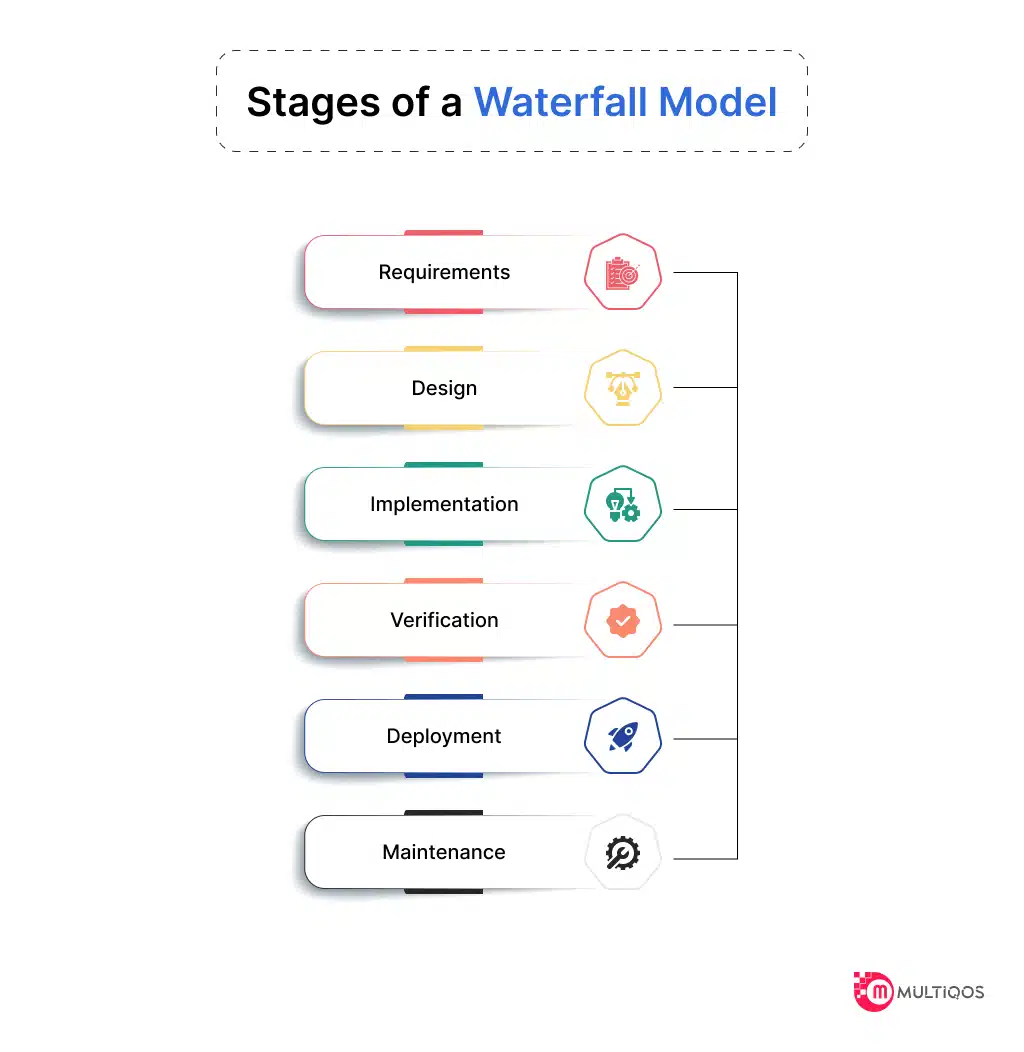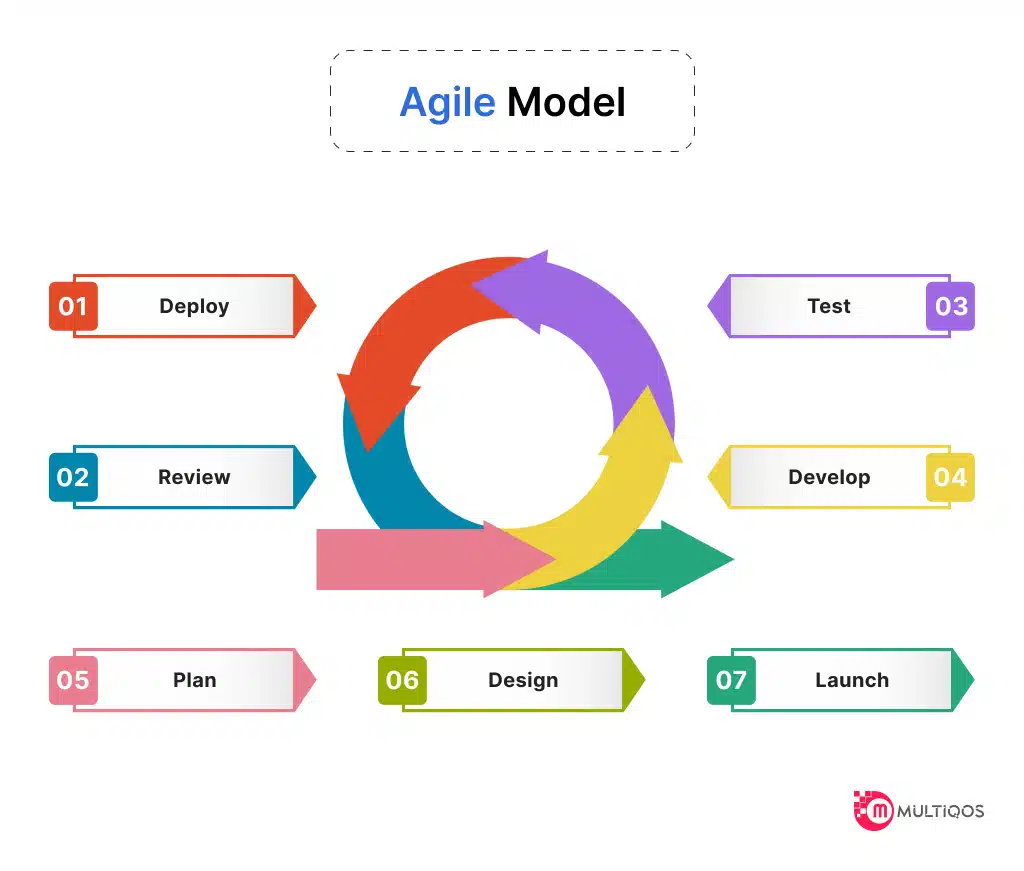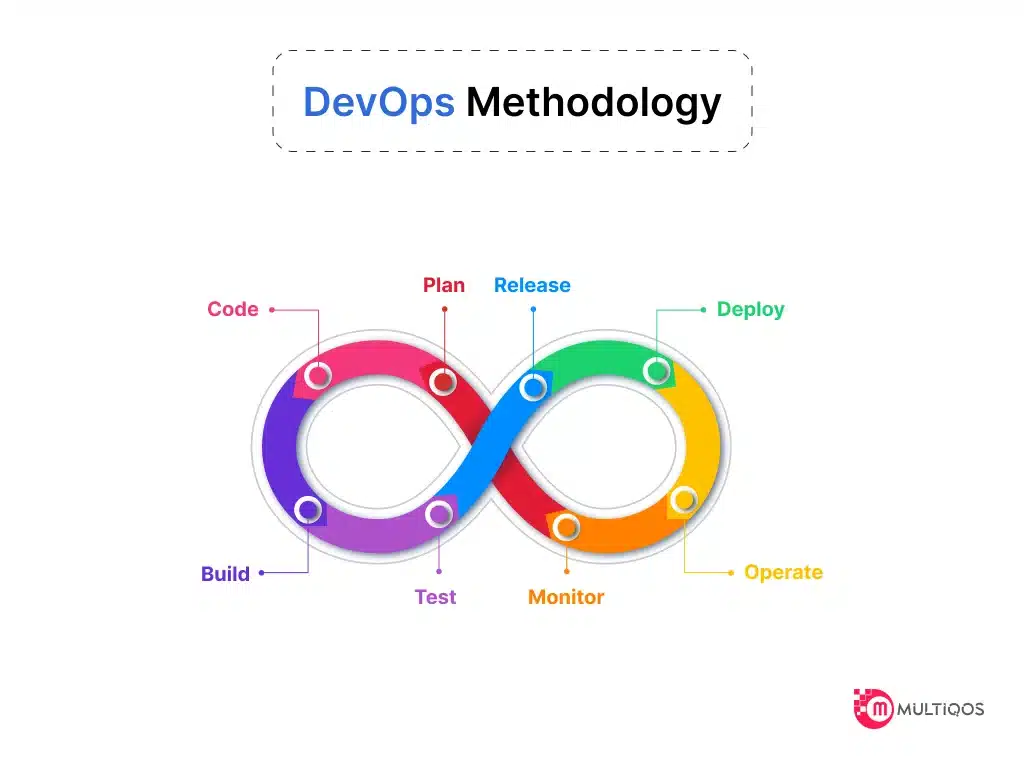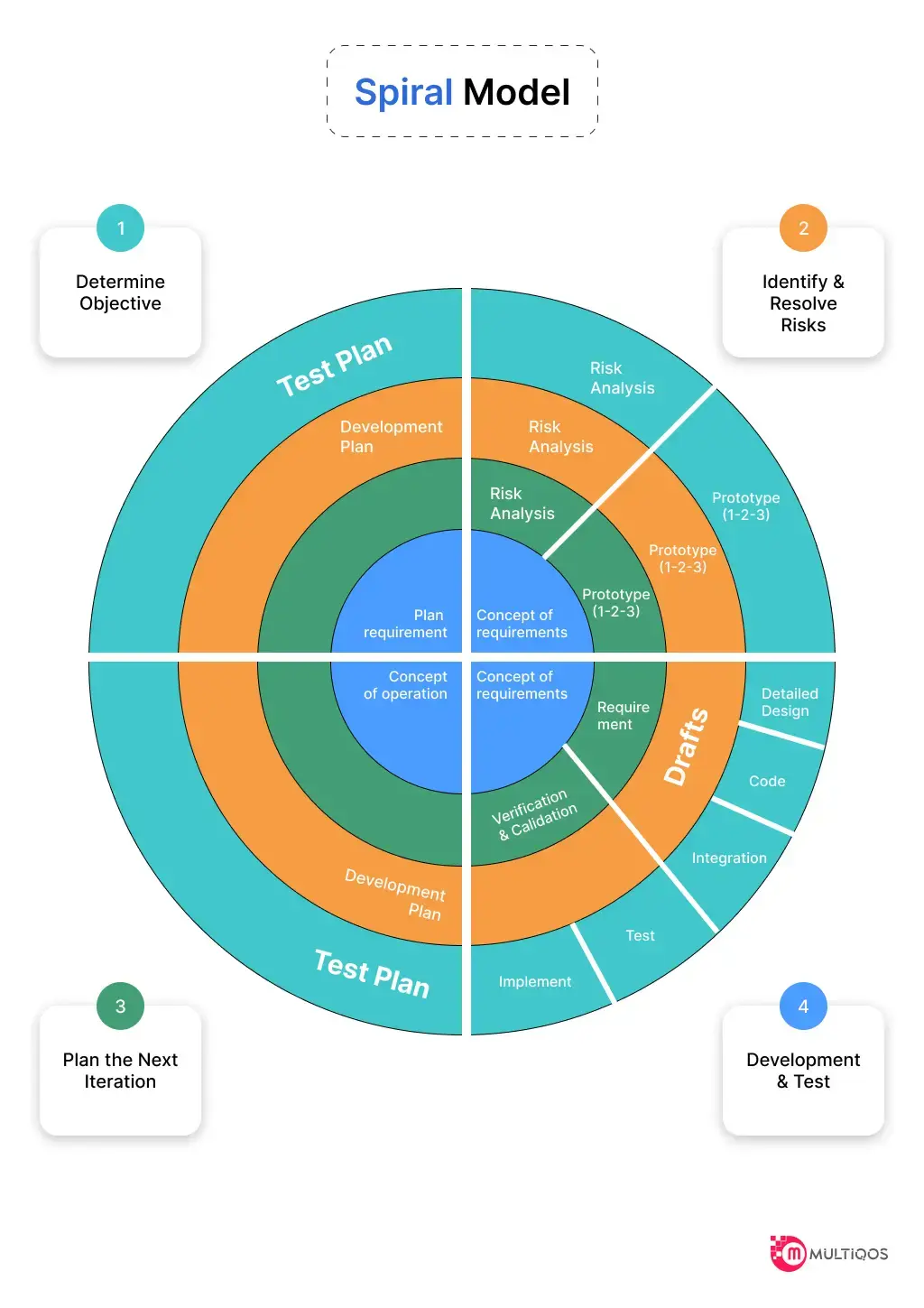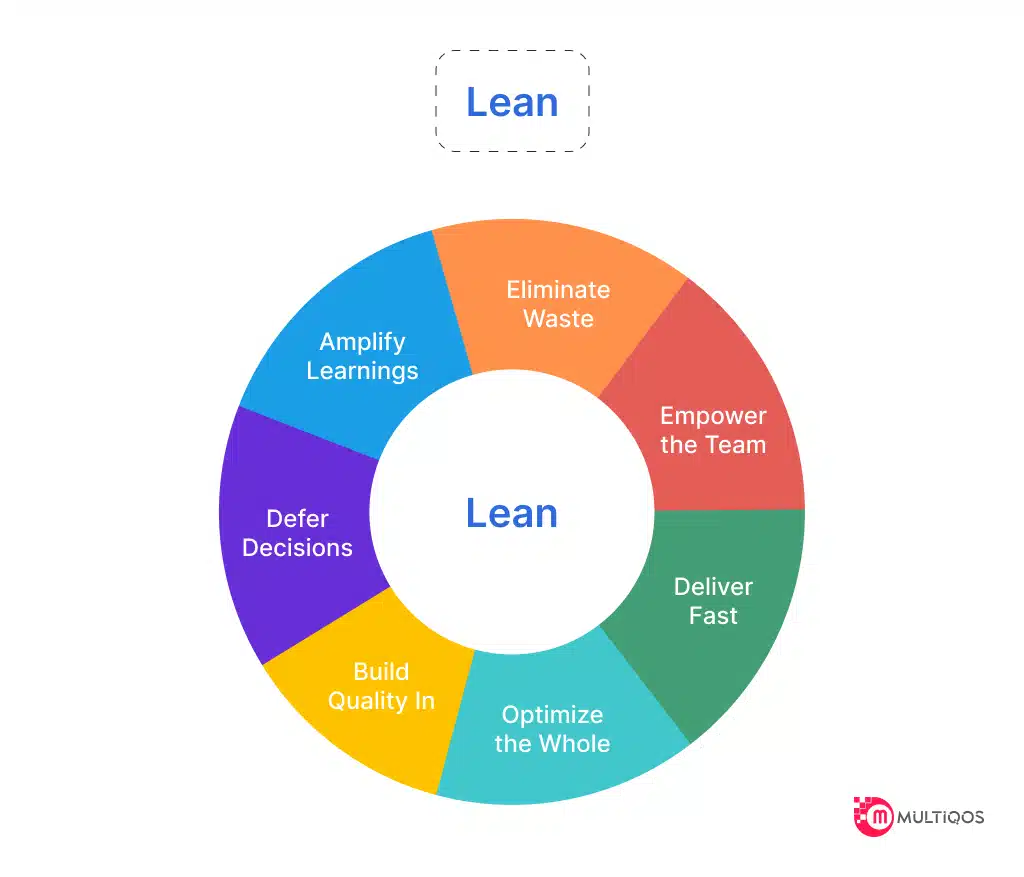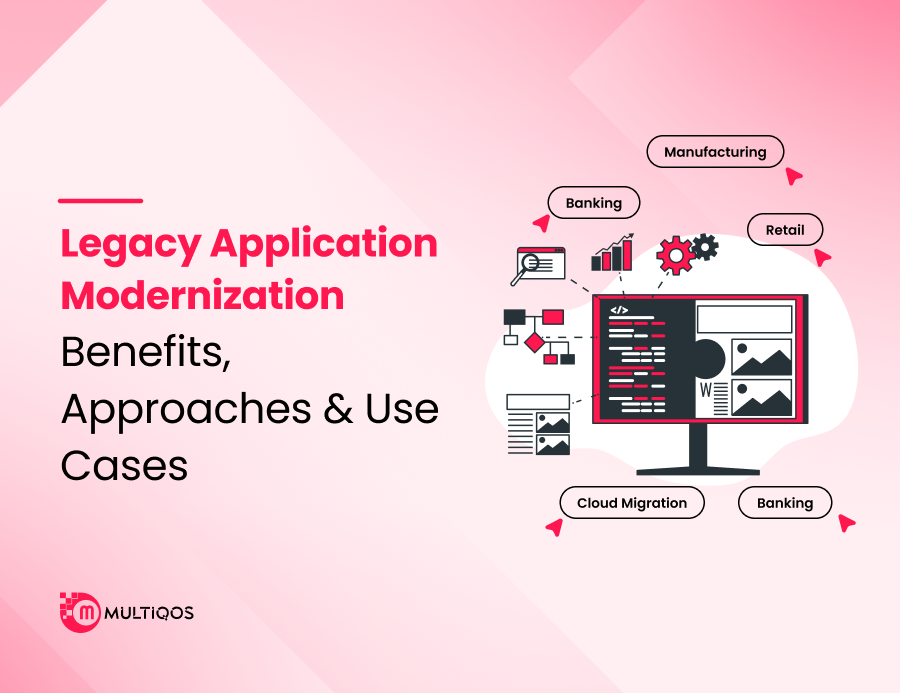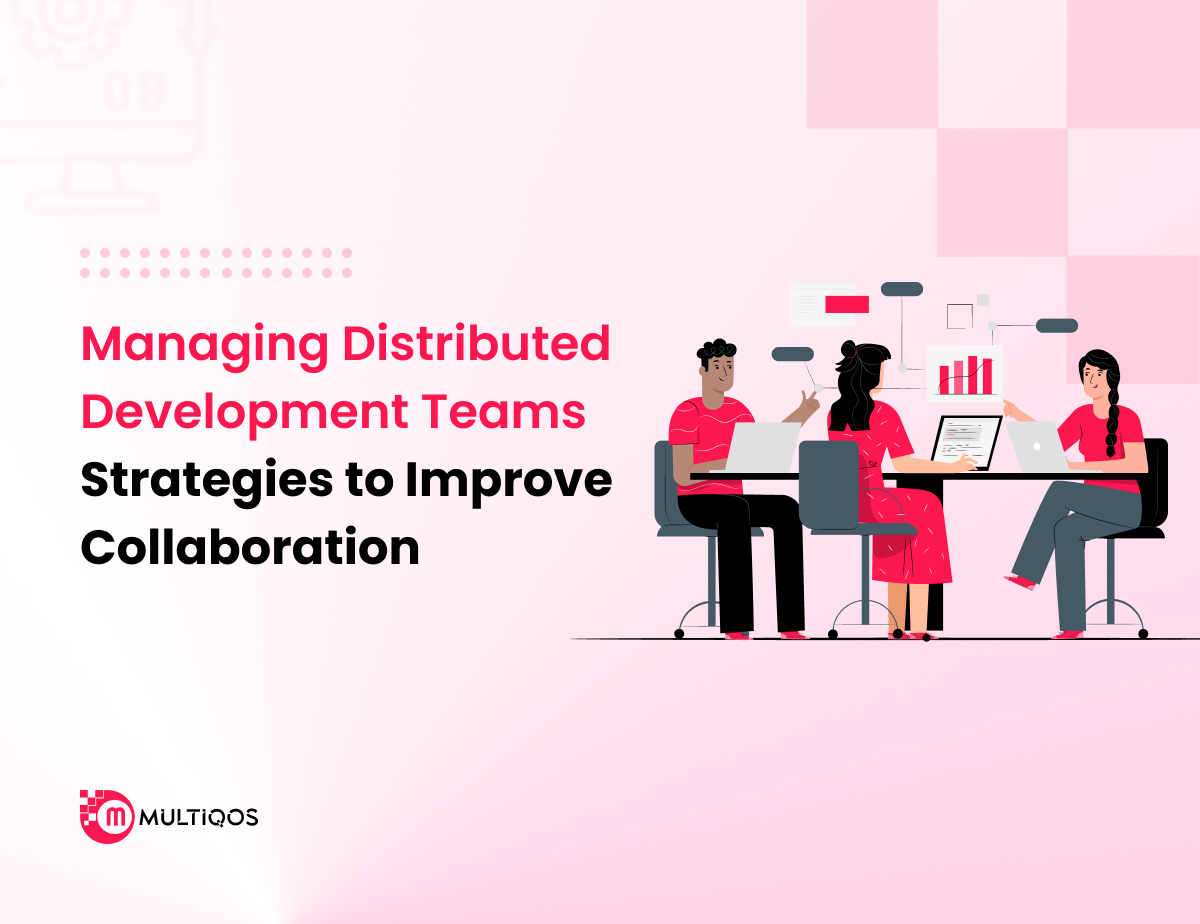A Guide to Popular Software Development Methodologies
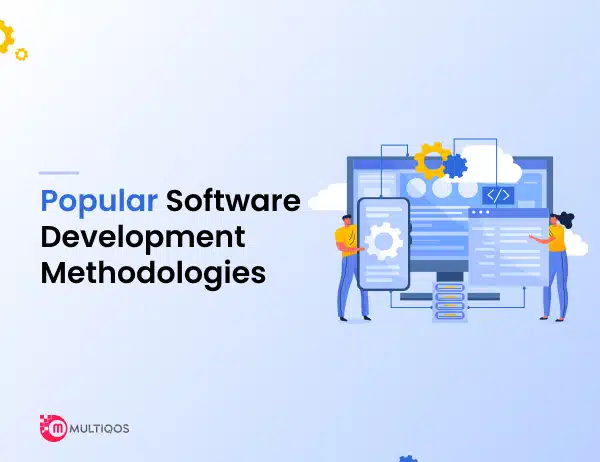
Table of Contents:
What does it take to build a successful software product? Well, you would say, a unique software business idea, the right technologies, and a good development team. While it’s true, there is something else you need to create successful software.
It’s the software development methodology which is also referred to as SDLC (Software Development Lifecycle). This methodology is vital to achieve your goals successfully and develop a software solution without any hiccups.
A software development methodology is like a well-defined plan or series of actions. Just imagine, your team initiates a new project without a proper plan or structure. What would be the result? It’s not hard to guess as chaos, missed deadlines, and unsatisfactory outcomes will be the expected results.
These methodologies are meant to streamline the process and give a roadmap to manage everything. They help to divide the complex task of developing software into manageable chunks. Choosing the right methodology is therefore a critical step in developing software solutions.
There is a long list of methodologies used to build software today. Each offers its own merits and demerits. You have to factor in various aspects such as project goals, software type, industry, and more to choose the best one for your project.
In this article, we will present the top software development methodologies that are widely used across the industry. You can choose one that best aligns with your requirements.
Let’s get started.
Waterfall
Waterfall methodology follows a linear approach in software development. It means the development process is divided into distinct stages where each one depends on the other. It’s a traditional approach that is still widely used in developing software solutions. As per stats, 22% of legacy systems are based on this development model.
So, before the next stage or phase begins, the previous one must be completed. Consequently, it prevents overlapping or iterative steps. In addition, this methodology is unidirectional. It’s called “Waterfall” because the process in it works like a natural waterfall. All phases of the development process go in a well-defined sequence.
Stages of a Waterfall Model
- Requirements
The first stage entails the steps to gather requirements for software to be developed. In this process, a requirements specification document is created. This stage helps to understand the needs and constraints.
- Design
Down the ladder, there is a design stage that includes two sub-stages – High-Level Design and Low-Level Design. High-level Design focuses on overall system architecture design, while Low-level Design works on individual components.
- Implementation
Once the design is completed, the next stage entails the implementation by creating source code. The whole software code is divided into chunks. It is built and assembled thereafter.
- Verification
The next stage involves testing to verify that the software meets the desired outcomes and adheres to the required standards. Bugs and errors are identified to make software flawless.
- Deployment
Once the software is developed it is deployed in the desired environment like a cloud or on-premises server.
- Maintenance – Post-deployment, software requires regular maintenance to ensure it is up-to-date, bug-free, and secure.
Advantages of the Waterfall Model
- Simple and Easy – Due to the linear structure of the Waterfall model, the process is easy to manage and understand. Every phase of the process has defined goals and a review process.
- Structured Approach – Since all stages are well-defined and follow a specified path, it offers a clear project structure providing full control over the process.
- Lucid Documentation – Every stage has lucid and extensive documentation that helps to track the progress and requirements of a project.
Disadvantages of the Waterfall Model
- Rigidity – This methodology rigidly flows in a single direction. So, it is difficult to move to the previous stage and make changes. Due to this rigidity, the waterfall model is not a more suitable option for projects that require rapid changes.
- Changes are Hard- It is hard to make changes when using the waterfall model, plus it is costly. Complete rework is required across development phases to make changes.
- Late Testing Phase – Software testing is performed at the last stage. Due to this many significant issues may remain undetected and unresolved. It leads to security issues and delays in projects.
Where to Use the Waterfall Model?
- Projects in which requirements are clear and unlikely to change.
- In the case of short and simple projects.
- There is a stable environment.
- Documentation is crucial to the project.
- The timeline is fixed.
Agile
Agile is a popular software development methodology today. It is an iterative approach where software is developed incrementally. It is a flexible approach that focuses on customer satisfaction. The success rate of Agile is 64% compared to the waterfall model according to statistics.
In Agile, projects are broken into small and manageable chunks called sprints or iterations. Developers can build functional components incrementally. Unlike Waterfall methodology where stages are fixed, it works in a cyclical manner. The cycle keeps going until all sprints are completed.
Advantages of the Agile Model
- Customer Involvement– Agile ensures close engagement with the clients because they are involved in the different stages of the software development process. With every cycle, the software is incremented by integrating customer feedback and customer satisfaction.
- Quick Delivery- In Agile software development methodology, projects are divided into smaller and manageable sprints. As a result, teams can efficiently handle the project and deliver outcomes more quickly offering faster time-to-market.
- Better Quality- Continuous testing and integration are an integral part of the Agile approach that makes it possible to find issues early. Consequently, the final product is reliable and best-quality.
Disadvantages of the Agile Model
- Requires Experienced Team- A skilled and experienced team is required for Agile methodology independently. The success of a project can be jeopardized in case the team lacks proper experience and coordination.
- Less Chances of Predictions– It is difficult to predict various aspects like costs, project timelines, and outcomes in the case of agile because of an iterative approach.
- Scope Creep – Sometimes Agile can result in scope creep due to its flexible nature. In this case, there are increased costs and extended timelines due to repeated changes and new additions to requirements.
Where to Use Agile Methodology?
- When there are no clear requirements at the beginning or expected to change.
- Rapid delivery is important for the project.
- Customer feedback is taken into account for every development phase.
- Regular refinements and adjustments are needed to the complexity of the project.
- If there is an experienced team with self-management capabilities.
DevOps
DevOps is not a software development methodology per se. It is rather a mindset that organizations can adopt with an agile development approach. It is a modern approach to software development that has been widely used by organizations. The benefit of it is that it ensures closer cooperation between development (Dev) and operations (Ops) teams, hence acquiring its name as DevOps.
Advantages of DevOps Methodology
- Fast Delivery- You can respond to customer needs faster than any other methodology with DevOps. It offers a faster software development process.
- Improved efficiency – Chances of errors and downtime are minute with DevOps because it adopts automation tools to streamline processes.
- Scalability – Handling large volumes of load is painless with DevOps. It is a scalable methodology that can serve only ten users or even ten million users.
Disadvantages of DevOps Methodology
- Learning Curve- You need to invest time initially in understanding new tools and practices to be ready with DevOps. It’s more time-consuming when your team is comfortable with traditional software development methodologies.
- High Resource Consumption- You need to invest in skills, resources, and infrastructure at the start to adopt DevOps workflow.
- Security Issues – There might be some security concerns if automation and frequent deployments aren’t handled properly. It could lead to security vulnerabilities.
- Higher Complexity – It involves a continuous delivery pipeline comprising different automated stages that could make the entire process complex, especially for large projects.
When to Use DevOps Methodology?
- It is best suited for software that requires constant changes like new features or updates.
- Software needs to be deployed many times a day or week.
- Quick scalability is the need for infrastructure to handle different loads or business growth.
Spiral
The Spiral software development methodology is suitable for handling large and complex projects. It helps developers effectively software projects with high risk and uncertainty. This methodology is known to be “Spiral” because the process of developing software happens to take the form of spirals or cycles.
In the process, every spiral represents a software development stage. Plus, with every iteration, the progress gradually moves to completion. The main focus of this model is iterative refinement and risk management.
Phases of the Spiral model
- Planning – This stage involves determining the objectives and identifying the alternatives. Plus, the possible constraints are evaluated. Besides estimating the project schedules costs, and resources are also involved.
- Risk Analysis – Another crucial phase of the Spiral model is to identify the potential risks and analyze them. In addition, making strategies to mitigate the potential risks is also a part of it.
- Engineering – At this stage, the development and testing take place to build the software. Depending on the risk analysis and planning, features of the software are coded, designed, and tested for quality.
- Evaluation – Once it is developed, the stakeholders will evaluate this product at this stage. It also involves gathering feedback to make necessary changes for improvement. The evaluation of the product helps to decide whether to move to the next iteration.
Advantages of Spiral Model
- Early Risk Management – You can identify and address risks early with the Spiral software development model that helps you avoid potential issues in the further stages.
- Improved Project Management – Planning is integral to every phase of this model improving the overall outcome and streamlining project management.
- Flexibility – As a highly flexible methodology, changes are easy to make at any stage of your SDLC. It is quite beneficial for projects where requirements are unexpected or evolving.
- Better Resource Allocation – It helps in the optimal allocation of resources when the project progresses. Consequently, it ensures the best use of time, budget, and efforts by diverting them to where they are needed the most.
- Customer Feedback – In the Spiral model, customers are involved throughout the development process providing feedback and other inputs. They can regularly review work that provides feedback early on. As a result, this process ensures that the end product meets the expectations and requirements of customers.
Disadvantages of Spiral Model
- Complexity – For small projects, the Spiral Model can be very complex. Plus, there may be unnecessary overhead and documentation due to its iterative nature. So, it is impractical for simple and small-size projects.
- Time-consuming – In this method, you need to spend time on every cycle due to its iterative nature which will consume a lot of time. So, it is not a good choice for projects with strict deadlines or time constraints.
Where to Use Spiral Model?
- It is a suitable methodology for projects in which there is a high degree of risk or uncertainty. Plus, systematic risk management is a prerequisite for a project throughout the development process.
- Projects with a high degree of complexity and large size that require a flexible and structured approach to development.
- The requirements are evolving and need to be addressed with continuous refinement and iteration.
- In the case of prototyping and early exploration of projects with high-risk elements.
Lean
When delivering value to customers with minimized waste is a priority for your software development project, you can choose the Lean methodology. It is a suitable methodology for such software development projects. It promotes waste reduction and maximizing efficiency.
Lean emphasizes the identification and elimination of things in the development process that fail to add value to the final product. It includes unnecessary steps, processes, and features.
Lean helps to deliver valuable features quickly. As a result, it offers rapid iterations and helps in adapting to changing requirements.
Advantages of Lean Methodology
- Value is the Main Focus – Delivering customer value is a priority for the Lean methodology. So, it ensures that every task or feature provides meaningful benefits.
- Efficiency and Reduce Wastes – It optimizes processes by eliminating waste. Teams can work more efficiently and effectively with the lean method.
- Fast Delivery – It offers rapid iterations and feedback loops that enable teams to deliver features quickly that offer value to customers.
- Empowered Teams – Lean promotes a culture where empowerment and ownership prevail. This leads to engaged and motivated team members.
- Quality-oriented- Quality is embodied in this software development approach that reflects in the process with a focus on customer value. It eliminates the need for extensive testing as well as reworks.
Disadvantages of Lean Methodology
- Difficulty in Scaling – Lean is an effective approach for small to medium-sized software development teams. However, it could be complex to scale it to larger projects.
- Relies Heavily on Feedback – Lean is more dependent on customer feedback as well as stakeholders’ feedback. However, it may not always be easily available or it may not be always actionable.
Where to Use Lean Methodology?
- It is a useful model when rapid delivery of valuable features is crucial to fulfill the market demands as well as to get a competitive edge.
- Projects where continuous learning and adaptation are essential to adjust to the changing requirements. It helps in ensuring adjustments and improvements quickly.
- To empower teams to take ownership of work to achieve success.
Concluding Thoughts
Developing software is a crucial step that must be done with the right approach and tools. In this process, choosing the most suitable software development methodology is a critical decision. It will affect the overall outcome, minimize efforts, and streamline the development process.
The methodologies discussed in this article are the best options today for software development. Moreover, you also need the right software development partner to accomplish your project. MultiQoS is a top-tier software development company with proven experience.
Our developers are proficient in modern development methodologies like Agile and DevOps besides using Waterfall model. You can leverage our expertise to build cutting-edge software.
FAQ on Software Development Methodologies
Today, many companies have adopted Agile. However, Waterfall remains one of the most used development methodologies even today.
Scrum is the most popular Agile methodology that has been adopted by companies around the world. It offers a flexible and agile development approach.
Choosing a methodology for software development depends on many factors including the type of project, timeline, available resources, and requirements. You can choose a methodology after evaluating different options based on these factors.
Get In Touch

